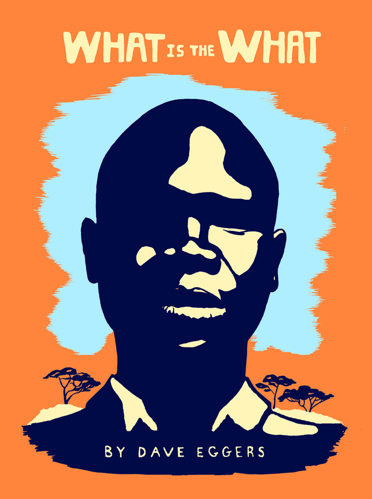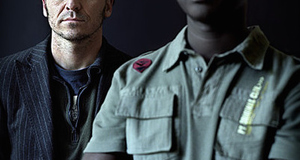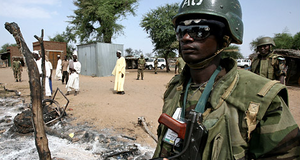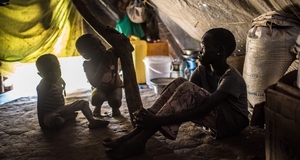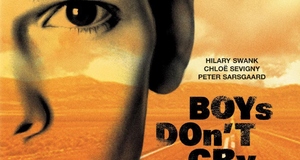"What is the What" as a Religious Memoir
By
2014, Vol. 6 No. 10 | pg. 1/3 | »
KEYWORDS:
David Eggers’ What is the What is a memoir about the life of Valentino Achak Deng and his personal experience with warfare, famine, and disease in his home country of Sudan and the neighboring countries he travels through as a refugee. Eggers provides Deng’s account of the displacement of over 20,000 children during the Second Sudanese War (1983-2005), who became known as the Lost Boys of Sudan. While the book is largely recognized as partially fictionalized autobiography, I argue that the book can also be considered a religious memoir. What is the What fits the criteria of a religious memoir because it asks basic questions about the meaning of human life in relation to the whole of reality. Deng’s memoir demonstrates how he endures hardship through his faith in God. Four central elements portray Deng’s faith: his use of religion as a guide on a personal level; as a guide in relationships; Deng’s maintenance of his faith through his exodus from Sudan to several refugee camps; and his reliance on faith while attempting to adapt to life in the United States. 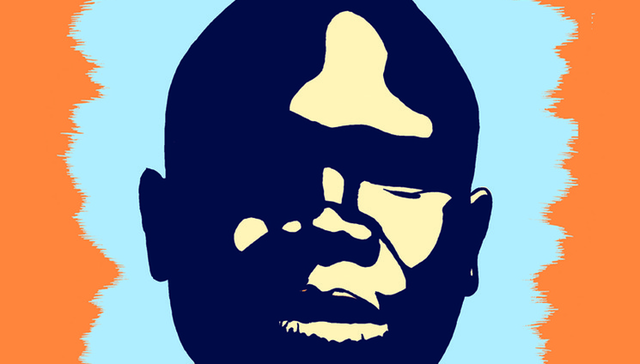
Eggers provides Deng’s account of his experiences as a part of the Lost Boys of Sudan in the Second Sudanese Civil War. The civil war took place from 1983-2005, due in large part to the introduction of Sharia law. According to Robert W. Hefner (1992), “most activists making these appeals [for Sharia law] were mainstream Muslims intent on abiding by what they regarded as the commands of their faith” (p. 1). Although there are varying opinions on the main cause of the second civil war, Ole Frahm (2012) said that the motivating factor for the beginning of the war was, “the nationwide induction of sharia law in 1983[that] triggered the founding of the Sudan People’s Liberation Army (SPLA) and the second civil war from 1983 to 2005” (p. 23). SPLA’s goal was to unify Sudan, and to “demand the convening of a constitutional conference at which representatives of all parties and groups would agree on a formula for ruling Sudan” (Wenger, 1991, p. 5). Although initially the war was strictly fought between the SPLA and the government of Sudan, the war soon began to involve several southern regions, most notably the Dinka and Nuer tribes, which are the largest ethnic groups of South Sudan. Emanating from the areas of warfare between these tribes came the so-called ‘Lost Boys,’ a group of approximately 20,000 (mostly) orphaned children from the Dinka and Nuer tribes. The group of children is largely made up of boys due to the fact that girls were often killed or abducted as slaves, and in extreme cases, sex slaves. Many of the boys witnessed the deaths of their families and the loss of their homes or simply did not know the fate of them because they had no choice but to leave as soon as their homes were invaded. The boys began their journey across the African desert, traveling to several different refugee camps. Some of the countries that the groups of boys traveled to included Ethiopia and Kenya. Their travels across the desert were made with little to no possessions — boys were lucky to own more than a shirt or pair of shorts, and almost nobody owned shoes. According to Fionn Meade (2002), some of the challenges that the boys’ faced included “surviving attacks by the Islamic northern army of Sudan, the loss of their families, a barefoot trek across the Sahara Desert, lion attacks, near starvation, and more than twelve harsh years in refugee camps” (p. 358).
Wendy Raudenbush Olmsted argues that a religious memoir asks the basic questions about the meaning of human life as they relate to the whole of reality (Olmsed, 1989, p. 15). Many religious memoires fit her criteria, for example Saint Augustine’s Confessions. Augustine believes in original sin. He refers to the book of Genesis when Adam and Eve commit the first sin the Garden of Eden. He claims that no one is born good, in fact, even babies are guilty of being evil, writing “but if I was born in sin and guilt was with me already when my mother conceived me, where, I ask you, Lord, where or when was I; your servant, ever innocent” (Augustine, 1961, p. 28). Therefore, he questions if one is born sinful, how then can an individual live a life that is meaningful and pleasing to God? The answer to this question is found though a transformation process. This process, which is a spiritual conversion, is ultimately Augustine’s process through which he repents his sins to God and attempts to find understanding of his life in relation to God’s will. This is not an easy concept for him to grasp as Augustine “mistook his own attachments to partial goods for the food itself” (Olmsted, 1989, 17). He differentiates between these two types of good by realizing God is perfect, all-knowing, just, loving, etc., and then can fully understand the idea that God is good and is able to guide human choices and actions. Augustine’s questions of life’s purpose through a spiritual transformation is a solid example of what defines a religious memoir, in that it asks the basic questions about the meaning of human life as related to the whole of reality. What is the What, however, is not viewed as a religious memoir at first glance because it is labeled as a fictional autobiography. In Dwight D. Murphey’s (2007) review on Eggers’ book, he claims “it is unfortunate that the word ‘autobiography’ has come to refer sometimes to a memoir written by someone other than the person whose life is being told” (p. 392). In other words, although Eggers writes Deng’s account, there are still passages that are considered fictional, due in large to Deng not being able to specifically recall specific conversations or being able to remember exactly when specific events took place. Therefore, many read this book as solely based off an individual’s experiences walking through the African desert during the time of a civil war. This book is presented as an account from a survivor who experienced traumatic events, but not necessarily as a story about religion or as a story with faith as a central component. What is the What is a religious memoir because it asks questions about how people deal with loss and what it means in relation to the whole of reality. The primary reason that What is the What fits the criteria of a religious memoir is because Deng’s faith is portrayed in times of hardship when he uses religion as a guide on a personal level. Prior to Deng’s journey across the African desert with the Lost Boys, he recalls the day when his village in Maria Bai was raided by the murahaleen, a group of armed Arab militias. The government of Sudan allowed the murahaleen to attack the SPLA and the Dinka people because they were viewed as rebels to the government. They would often enter villages to rape, pillage, and take young people as slaves to work in domestic labor or field work in North Sudan. During a particular raid by the murahaleen, Deng recalls losing his friend William K. After avoiding being shot or captured by the armed raiders, Deng fled Maria Bai and hid in a hollow log for days, not knowing where his closest friend was. He feared that, like his home village, he would never again see William K. It would not be until several weeks later, when Deng settled in a refugee camp in Ethiopia, that he would eventually see his friend again. Eggers, writing as Deng, states “I no longer knew how to cry. But I was so thankful. I felt it was God giving me this gift of William K after taking away Deng” (Eggers, 2006, p. 187). Here, Deng gives God all of the credit for returning his close childhood friend to him after the passing of his friend (also named Deng). Deng (the narrator) dealt with the loss of loved ones at a very young age, but losing a close friend in the midst of a long journey across an African desert made his situation even more difficult. Deng’s situation relates to the whole of reality in that it asks the basic question of how people should deal with loss. Many people deal with loss by entering into a state of denial. When attempting to cope with loss, many will not willingly admit that someone that was so close to them is truly gone. This could lead to a state of depression or a state of anger. Generally, people are accusatory of God for allowing a loved one to be lost or to die. Deng’s response, however, is an expression of gratitude and thankfulness for bringing back a close friend into his life that will help him throughout his journey. It would be easy for Deng to be bitter and to have claimed that God owed him for allowing his friends to die and therefore does not deserve his thanks. His response, however, is an example of how he positively uses religion on a personal level.Continued on Next Page » Suggested Reading from Inquiries Journal
Inquiries Journal provides undergraduate and graduate students around the world a platform for the wide dissemination of academic work over a range of core disciplines. Representing the work of students from hundreds of institutions around the globe, Inquiries Journal's large database of academic articles is completely free. Learn more | Blog | Submit Latest in Literature |

